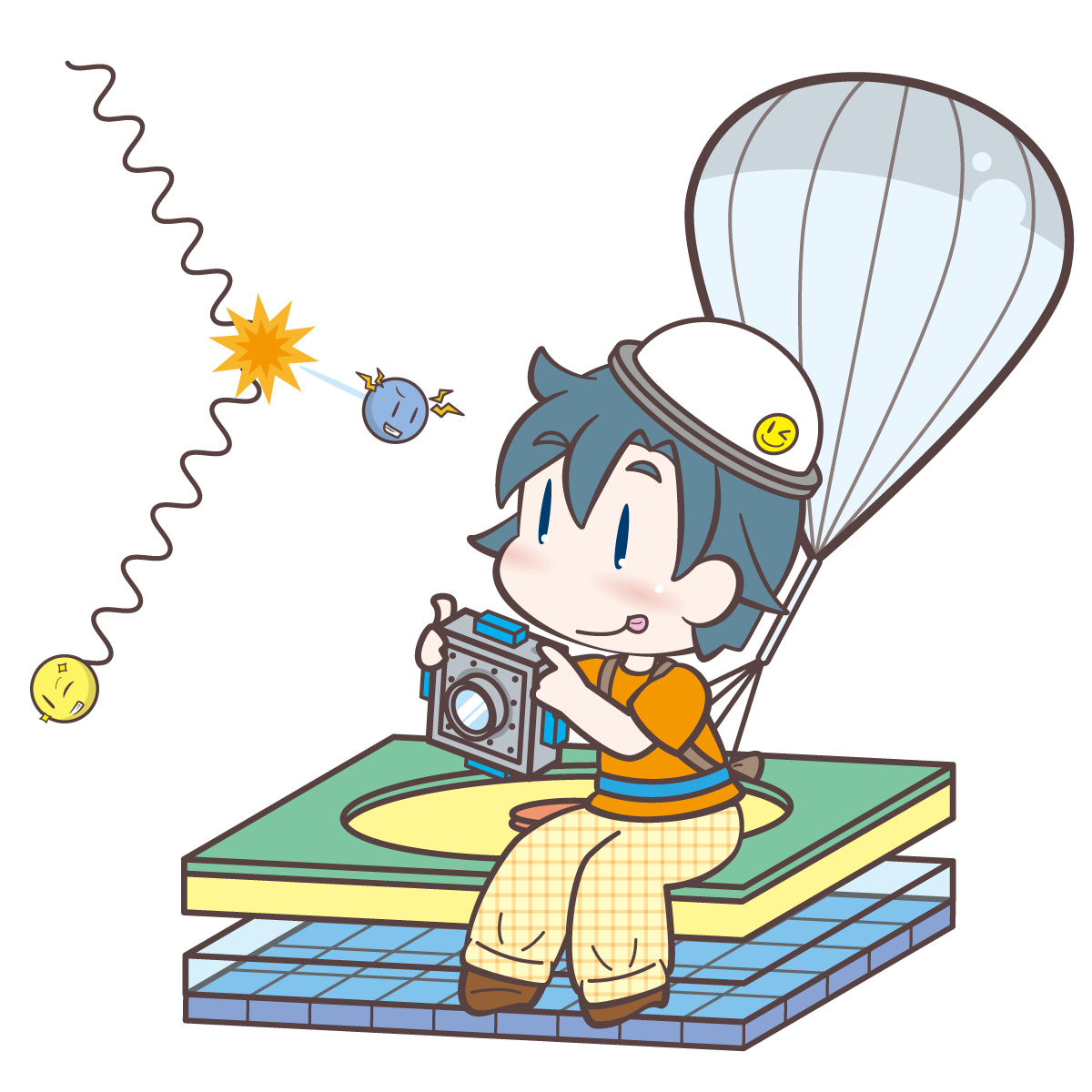SMILE-I (Sub-MeV gamma-ray Imaging Loaded-on-balloon Experiment I)
 As the first step for the future observations,
As the first step for the future observations,
we observed gamma-rays at the balloon altitude utilizing a small-size ETCC.
The purposes of the first balloon experiment are as follows:
- Validation of gamma-ray detection in the space conditions.
- Observation of diffuse cosmic and atmospheric gamma-rays in sub-MeV region.
On September 1, 2006, the ETCC loaded on a balloon was launched from Sanriku Balloon Center, ISAS/JAXA.
This balloon flew at the altitude of 32-35 km, and it was successful to observe diffuse cosmic and atmospheric gamma rays.
SMILE-I telescope


filled with a Xe-based gas (Xe:Ar:C2H6 = 80:18:2 [mass ratio], 1 atm)
and the surrounding GSO pixel scintillator arrays.
This ETCC had an effective area of approximately 1 cm2 for the energy range of 0.15-1.5 MeV.
The field of view of SMILE-I ETCC was so large (3 sr) that SMILE-I suited the observation of diffuse gamma rays.
A plastic scintillator was placed above the ETCC,
and the anticoincidence trigger between the ETCC and plastic scintillator used to reduce the charged particle events.
Usually, some heavy anticoincidence scintillators are placed
for the purpose of the rejection of gamma-rays from the outside of the field of view.
However, there was no heavy anticoincidence scintillator due to the powerful background rejection tools of ETCC.
The Geant4 simulation said that SMILE-I ETCC was expected to detect approximately 400 events
of diffuse cosmic and atmospheric gamma-rays at the altitude of 32 km during the live-time of 3 hours.
Balloon experiment

 SMILE-I telescope was loaded on a balloon having a volume of 100,000 m3,
SMILE-I telescope was loaded on a balloon having a volume of 100,000 m3,
and it launched from Sanriku Balloon Center, ISAS/JAXA, at 06:11 on September 1, 2006 (JST).
The balloon flew steadily,
and the level flight started at 08:56 (JST) and lasted to 13:00 (JST) at the altitude of 32-35 km.
SMILE-I ETCC operated stably from 05:00 to 12:33 without any troubles.
After the observation, the balloon descended safety,
and SMILE-I ETCC was recovered at Pacific sea.
Photographs
Results



 In the onboard storage, the data of 2x105 events were saved.
In the onboard storage, the data of 2x105 events were saved.
After the event selection utilizing the Compton-scattering kinematics fit
and the particle identification based on the energy deposit rate,
2100 gamma-ray event candidates remained.
The number of gamma-ray event candidates during the level flight is 420,
which is well consistent with the expectation of simulation.
Furthermore, the rate of gamma-ray event candidates increased with the balloon ascending,
and maximized at near Pfotzer maximum.
After Pfotzer maximum, the rate decreased with the balloon ascending,
and was almost constant at the level flight.
This event rate dependence on the atmospheric depth was consistent
with the model based on the other experiments.
Finally, the intensities of diffuse cosmic and atmospheric gamma rays obtained by SMILE-I ETCC
were consistent with the other balloon/satelite experiments.
By these results, it was verified that SMILE-I ETCC can observe gamma rays with the powerful background rejection tools in the space conditions.


